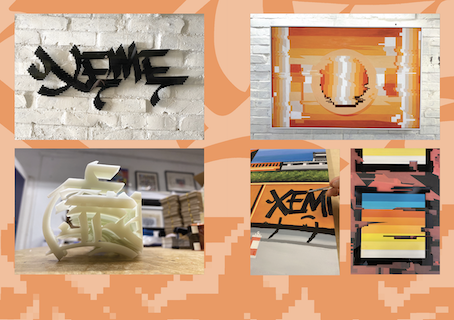Exploring Asian Futurism: A Cultural Odyssey into Tomorrow
In a world increasingly shaped by technological advancements and cultural diversity, the concept of Asian futurism has emerged as a powerful and thought-provoking movement. Similar to the well-known Afro-futurism, Asian futurism marries elements of science fiction, culture, and race to create a captivating exploration of what the future holds for Asian societies.
Xeme, a Hong Kong graffiti writer - images from his title ‘Kowloon Bustle’
The Essence of Asian Futurism
Asian futurism stands as a creative and visionary movement that imagines the future through the lens of Asian culture, experiences, and perspectives. Unlike the concept of Techno-orientalism, which has sometimes perpetuated fetishized stereotypes, Asian futurism places Asian creators and their thoughts at the forefront. This shift in perspective allows for a more genuine and diverse representation of the future, unburdened by preconceived notions.
Emergence and Influences
While Asian futurism is a relatively new concept, it has quickly gained momentum within the realms of literature, film, television, and street art. Notable examples like Truong Minh Quý's 2019 film "The Tree House" offer a glimpse into this imaginative world. The movie weaves a narrative about Vietnamese people living in the jungle while being narrated by a man residing on Mars in the year 2045. This juxtaposition of the past, present, and future within an Asian context exemplifies the essence of Asian futurism.
Asian Futurism in Literature and Film
Literature and film have played significant roles in the propagation of Asian futurism. Authors and filmmakers are increasingly exploring this genre, offering audiences fresh and thought-provoking narratives. Works like "The Three-Body Problem" by Liu Cixin and "The Devourers" by Indra Das are exemplary, as they blend elements of Asian culture and futurism seamlessly, paving the way for a new wave of speculative fiction.
Asian Futurism in Street Art
The realm of street art, too, has embraced Asian futurism as a recurring theme. Graffiti and street art have a unique ability to reflect contemporary societal narratives, and artists like Xeme, Chip7, and Suiko have made significant contributions to this movement.
Xeme and Chip7, featured artists in Soi Books' diverse international graffiti collection, have masterfully combined traditional Asian concepts with futuristic themes in their work. Their art serves as a visual representation of the collision between the past and the future, captivating viewers with its vivid imagery.
Spread from Suiko’s Super Strike
Hiroshima-based artist Suiko adds his unique touch to Asian futurism through his work. Drawing inspiration from his city's rich history and the resilience of its people, Suiko's art reflects the fusion of Hiroshima's past and a future filled with hope.
Conclusion
Asian futurism is a dynamic and evolving movement that offers a fresh perspective on what the future may hold for Asian societies. It transcends traditional boundaries, allowing creators to envision a future where Asian culture and innovation are central. As the movement continues to grow, it will undoubtedly contribute to a more diverse and inclusive representation of the future in art, literature, and film, challenging our perceptions and broadening our horizons. So, whether you're exploring the pages of a novel, watching a futuristic film, or admiring graffiti on the streets, keep an eye out for the captivating world of Asian futurism—it's a journey worth embarking upon.



